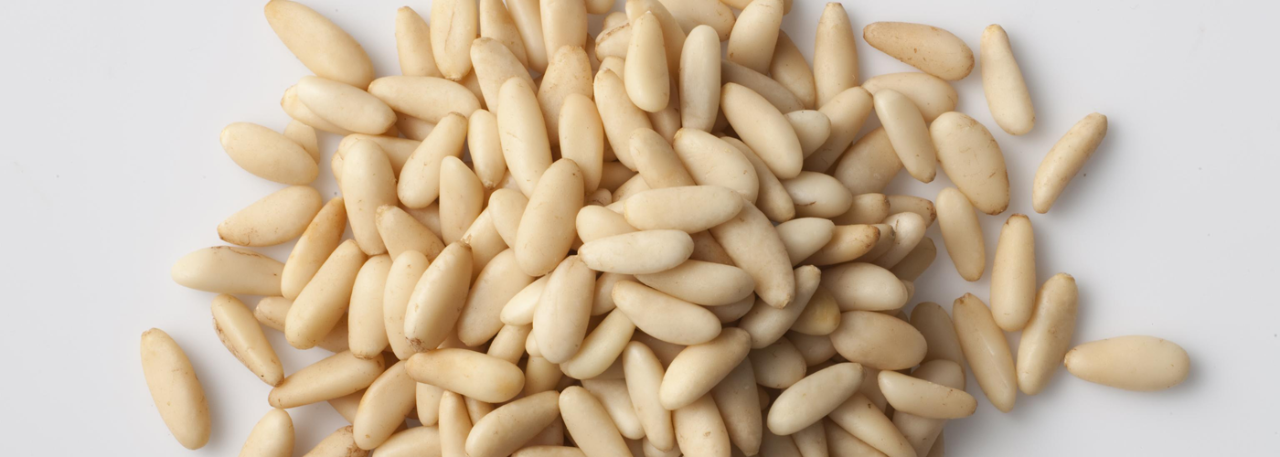.png.transform/rendition-xs/image_image%20(1).png)
Valladolid pine nut
A peeled pine nut from the Pinus Pinea (stone pine). An ellipsoidal seed with three blunt edges and a very hard, blunt cover. The milky white seed is sweet and edible. The nut from the Pinus Pinea is about 0.35 in / 9 mm long and 0.12 in / 3 mm wide.
The Valladolid Pine Nut name does not represent a pine nut variety, is not a designation of quality and is not protected by any quality mark. However, owing to the fact that the province of Valladolid (Castile-León region) is a major producer of pine nuts, the informal category of the Valladolid pine nut has established itself spontaneously.
In particular, the town of Pedrajas de San Esteban and some others in the vicinity, are known for their significant volume of production (about 1,500 metric tons processed per year) and for the tradition of preparing pine nuts using a method noted for the feature of drying pine cones in the sun in order to open them.
Tasting notes
Creamy texture, aromas of resin.
Other notes
Elongated pine nut, with typical ivory white appearance.
Production / Processing method
The preparation process begins with the pine nut in its shell, obtained previously from the pine cones. The next step is to break open the shells, after they have been sieved and sorted by caliber, so that the pine nuts come out from the breaker in size order, to be passed, after peeling, to the selection stage.
The product obtained sometimes undergoes a further process: washing, which is required for marketing outside the region. Once the product is prepared in this way, it is ready for storage. Finally, the pine nuts leave the facilities packaged as requested by the buyer, in bulk or retail format, in bags or glass jars.
Geography / Relief and climate
The Tierra de Pinares region is the epicenter of pine nut production in the province of Valladolid. It is a dry area, where the clearly continental climate has broad day/night and summer/winter temperature variations. It is located in the sedimentary basin extending from the Guadarrama Mountains to the Castilian moorlands, at an average altitude of 2798.56 ft / 853 meters above sea level, mostly covered by extensive forests of maritime pines (pinus pinaster) and stone pines (pinus pinea). The geographical highlight is the Duero River, as well as its numerous tributaries and sub-tributaries, such as the Eresma, Zapardiel, Adaja, Trabancos and Cega. Given the composition of the soil, there are also many permanent ponds throughout the region.
The Tierra de Pinares region is the epicenter of pine nut production in the province of Valladolid.

